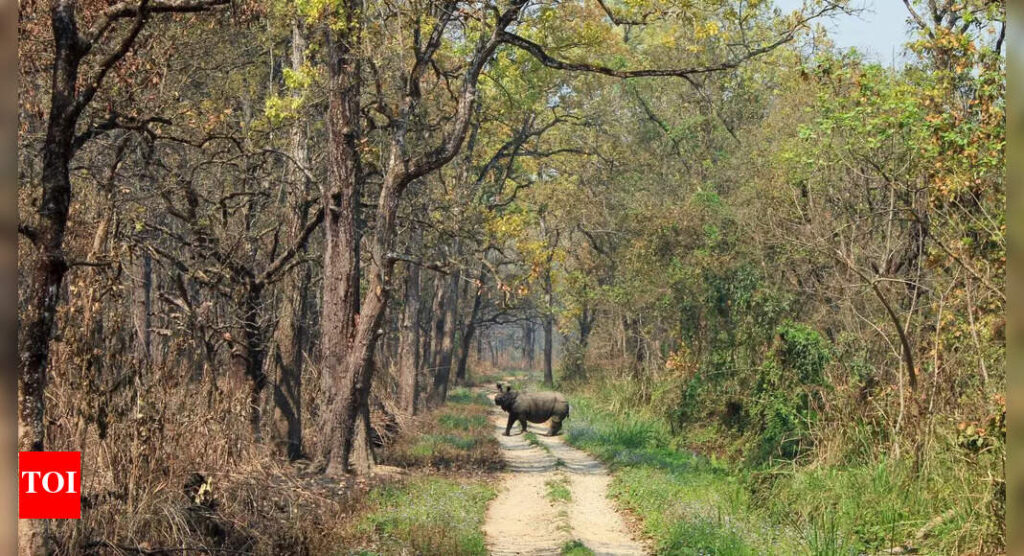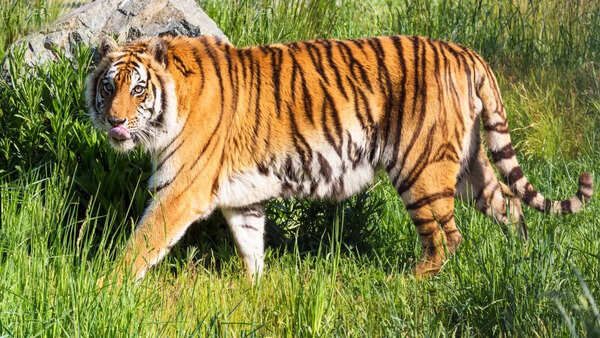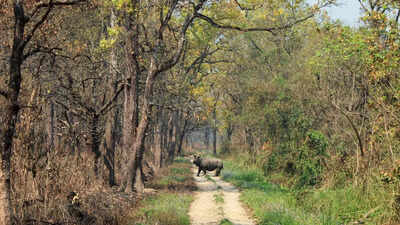6 dangerous animals commonly spotted in India’s National Parks

Over the past few years, national parks across India have seen a steady rise in footfall. From Ranthambore to Kaziranga, safari bookings are growing, and interest in nature-based travel is clearly on the rise. For many, these trips are a way to disconnect from the city, get closer to nature, and maybe even spot a tiger in the wild.But while these parks are designed to protect wildlife, they’re not amusement parks. Visitors often forget that they’re stepping into raw, untamed territory, which is home to animals that aren’t just wild, but sometimes unpredictable. Some encounters can turn risky if not handled responsibly.This article looks at six such species that demand caution, not fear, but awareness. They form a crucial part of India’s natural landscape, but they also deserve distance, respect, and understanding.Bengal TigerWhere you might spot them: Jim Corbett, Kanha, Tadoba, Sundarbans

Tigers are apex predators, but they’re also known for avoiding humans unless threatened or startled. The real danger lies in accidental run-ins, like walking into their territory unknowingly or getting too close during a sighting. A cornered or protective tiger will act on instinct.Keep in mind: Remain inside your vehicle during all safaris. Avoid calling out or making loud noises, even in excitement. Tigers usually stay hidden unless disturbed.Indian ElephantBest seen in: Kaziranga, Nagarhole, Periyar

Elephants are deeply social and emotionally intelligent. They’re often calm and even tolerant of human presence, but that changes quickly if they feel their young are under threat or if they’re in musth (a hormonal phase in males marked by heightened aggression). Unlike big cats, elephants are more visible, but that doesn’t make them less dangerous.What helps: Always give them space, especially if you see a calf nearby. Never try to overtake or approach an elephant, even from a distance.Indian LeopardFrequently spotted in: Jhalana, Bandhavgarh, Sanjay-Dubri

Leopards are far more adaptable than tigers and are known to live even on the edges of cities. In the wild, they prefer to stay hidden and avoid attention. But if surprised, especially near their den or with prey, they can react with alarming speed and force.Stay safe by: Not walking on foot in forested areas, particularly near thick cover. Listen to your forest guide and avoid moving away from your group.Sloth BearYou’ll find them in: Satpura, Pench, and parts of Central India

Sloth bears don’t get as much attention as tigers or elephants, but they are among the top contributors to human-wildlife conflict in several Indian states. Their eyesight is poor, and they’re known to charge if they sense sudden movement nearby, especially while feeding or with cubs.Basic rule: Avoid going near bushes or termite mounds where bears might be looking for food. Stay alert during early mornings and late evenings, as that’s when bears are most active.Indian Cobra (and other venomous snakes)Found in: Almost all national parks across India, especially during summer and monsoon

India is home to several venomous snake species, including cobras, kraits, and vipers. They don’t seek confrontation, but bites can happen if they’re accidentally stepped on or disturbed while resting under leaves, rocks, or near water.Safety tip: Wear covered shoes, avoid walking in grass or undergrowth, and always check your surroundings if you’re in areas with snake presence.Saltwater Crocodile

Spotted mostly in: Sundarbans, Bhitarkanika, Andaman coastal areasSaltwater crocodiles are rarely seen during the day, but that doesn’t mean they’re not close. These predators are excellent at camouflaging themselves in muddy waters and riverbanks, striking only when they’re absolutely sure. That one strike is often fatal for animals or humans.Your safety net: Avoid going too close to riverbanks or dipping your feet in water, no matter how calm it looks. Always follow local alerts in crocodile zones.When’s the right time to visit?Most national parks are open from October to June, but for better wildlife visibility, the dry season (March to early June) is ideal. Water sources are fewer, so animals tend to gather around known watering points, making sightings more likely and more predictable for guides.Quick ground rules for visitorsStick to safari tracks. They’re marked for a reason.Don’t step out of the vehicle. Even if the view seems safe.Lower your voice. Wild animals are quick to pick up unfamiliar sounds.Avoid bright clothing or strong fragrances. They draw attention.Never attempt selfies with wildlife. It’s not just risky– it’s illegal in some parks.






